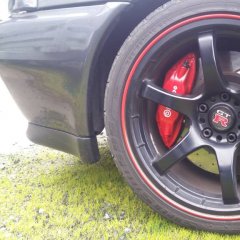R32: Mechanical Boost Gauge Installation (gts-t)
Announcements
-
Similar Content
-
Latest Posts
-
By Robzilla32 · Posted
https://youtu.be/un8EW82GwKc?si=S9NBHsvl26QEJTF4 -
By A31Skyline · Posted
hi guyss! im new here so i want to ask all of you guys about the nissan RB20, i just swap my A31 Cefiro/Altima RB20e To RB20DET and got a problem with the engine bearings such as conrod etc. but i have a spare engine which is rb20e. is it possible to use parts from an rb20e block ? or is there any difference on internal of the engine beside the compression ratio? because if i cant use some of the parts from rb20e , want it or not i have to buy new specific only for rb20det . thanks guys i hope you guys can help me and tell me which parts is different:) -
Buy some GKTech ones, with sphericals instead of rubber or poly, and enjoy the lower control arms going exclusively in the up-down direction, instead of the forewards-backwards direction that squishy bushes allow.
-




Recommended Posts
Create an account or sign in to comment
You need to be a member in order to leave a comment
Create an account
Sign up for a new account in our community. It's easy!
Register a new accountSign in
Already have an account? Sign in here.
Sign In Now